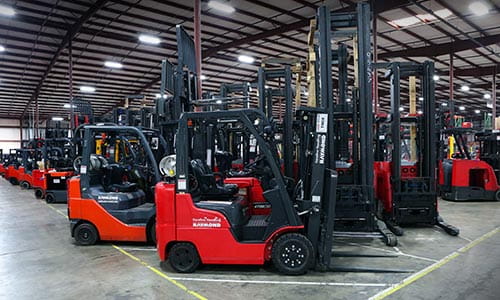
Since it might be difficult to identify a high-quality equipment, we’ve put up a list of things to consider while inspecting a forklift. If you decide to buy a used machine from Waverley Forklifts, our knowledgeable team will help you every step of the way. Know more about Second Hand Forklifts.
Initial Presences
Examine the forklift closely after determining the answers to the aforementioned queries. What does it first seem like? Is the paint worn off and chipped? Does it have any rust on it? Do the panels have no dints and are they straight? Even while some damage is only visible on the surface, it may be a sign of deeper problems that are hidden from view.
Operator Compartment and Seat
Examine the seat to check for any obvious tears. It’s also crucial to make sure the seat belt is securely fastened and in place. As you sit down, make sure you can access every function.
To check if the horn is functioning, turn the steering wheel and listen for movement. You must also make sure that a load rating or data plate is installed and readable.
Tyres Check the tyres for any rips or cuts, and make sure that the wear on all four tyres is equal. Check the amount of tread left on both solid and pneumatic tyres. It is also necessary to check the tyre pressure on pneumatic tyres.
Fuel Selections
Make sure a fuel cap is installed on diesel forklifts and inspect the fuel lines. On LPG systems, the gas lines should be straight and the bottle connection should be in excellent working order. In the case of battery-electric versions, make sure the battery is free of leaks, missing caps, and broken leads. Verify that the forklift’s charger is operational. Make sure a watering gun is available if needed.

Get It Going!
When everything seems OK, it’s time to start the forklift. Pay attention to how it starts; it should be easy to use and smoothly transition to idle. While the engine is operating, open the engine cover and check for any leaks of oil. Make sure there is no coloured smoke coming from the exhaust by checking it as well.
Hydraulics and Mast
Check the hydraulic functioning and the mast now. The carriage must be raised to its maximum height. Observe how the mast moves; is it smooth and steady in its movement, and is the lifting speed constant? And do the mast-directing controls move without hesitation? Check for leaks in the hydraulic hoses that are attached to the mast. When the hydraulics are under pressure, move the mast and look for leaks.
Lighting and Reversing Beacon
Verify if the forklift has lights installed. There should, at the very least, be a flashing light installed. Additional illumination is usually a benefit but is not required. Ask whether the light(s) were installed lately or if they are original. Forklifts should always have fitted buzzers or beepers. Put the forklift in reverse and listen for one.
Operating / Driving
It’s crucial to check both forward and backward when using the forklift. Make a tight turning circle with the forklift and see how it handles. Make sure you apply the brake, inching pedal, and accelerator many times. Next, go over the dash and check that the fuel gauge, hour metre, and any other installed indicators are all operational.




